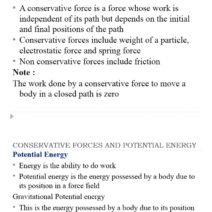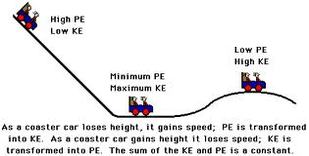Understanding the conservation of kinetic energy is fundamental in the realm of physics. Kinetic energy plays a pivotal role in various phenomena throughout science. Through the lens of mechanics, it delineates how energy transforms and transfers in dynamical systems. While kinetic energy is often associated with moving objects, its conservation principles are central to understanding interactions in the physical world.
The law of conservation of energy states that energy cannot be created or destroyed but can only be transformed from one form to another. When examining kinetic energy specifically, it is important to analyze the conditions under which this quantity is conserved. This principle is particularly applicable in elastic collisions, where two objects collide and then separate while retaining their kinetic energy. Conversely, in inelastic collisions, kinetic energy is not conserved as some energy is transformed into other forms, such as sound or heat.
In essence, the conservation of kinetic energy is a nuanced concept, dependent upon the specific context of motion and collisions. Delving into the intricacies of this topic unveils a rich tapestry of interactions that are integral to our understanding of physical laws.
The Fundamentals of Kinetic Energy
Kinetic energy can be defined as the energy an object possesses due to its motion. Mathematically, it is represented as:
KE = 1/2 mv²
where KE represents kinetic energy, m is the mass of the object, and v is its velocity. This equation demonstrates that kinetic energy not only depends on the object’s mass but also on the square of its velocity. Therefore, an object moving at high speeds will have significantly more kinetic energy than a slower-moving object of the same mass. This relationship between speed and kinetic energy highlights the dynamic nature of energy in motion.
Consider a scenario involving a car traveling on a highway. As its speed increases, its kinetic energy rises exponentially. This is crucial when discussing safety measures, as the impact force during a collision is directly related to the kinetic energy of the vehicles involved.
Elastic vs. Inelastic Collisions
To deepen the understanding of how kinetic energy is conserved, we must distinguish between two types of collisions: elastic and inelastic. In elastic collisions, both momentum and kinetic energy are conserved. This means that when two objects collide, they bounce off each other without any permanent deformation or generation of heat. A prime example of an elastic collision is the interaction between billiard balls. After colliding, they move apart, and their total kinetic energy remains constant.
On the other hand, inelastic collisions involve a transformation of kinetic energy into other forms of energy. When two objects collide inelastically, they stick together or deform, leading to a loss of kinetic energy in the system. For instance, when a car crashes into a wall, the kinetic energy is partly converted into sound energy, heat, and structural deformation of the vehicle. This transformation is crucial in applications such as crash safety design, where understanding the loss of kinetic energy can inform better protective measures.
Applications of Kinetic Energy Conservation
The principles of kinetic energy conservation find application in various sectors, from engineering to sports. In the field of renewable energy, for example, understanding how kinetic energy can be harnessed is essential for optimizing wind turbines. These turbines convert the kinetic energy of moving air into electrical energy, demonstrating the practical implications of conserving kinetic energy.
Similarly, in sports, athletes often utilize the concept of kinetic energy to enhance performance. In track and field, sprinters focus on maximizing their kinetic energy by optimizing their speed and technique. This strategic approach can mean the difference between winning and losing in competitive environments.
Additionally, kinetic energy conservation is a cornerstone in machinery and automotive engineering. Designers meticulously analyze the kinetic energy dynamics within engines and mechanisms to improve efficiency and minimize energy losses. Innovative designs frequently utilize conservation principles to create machines that operate smoothly and sustainably.
Challenges and Misconceptions
Despite its foundational role in physics, misconceptions about kinetic energy conservation persist. A common misunderstanding is that kinetic energy is always conserved in every scenario. However, this is not the case, as previously noted, particularly in inelastic collisions. It is vital to understand the underlying assumptions before applying conservation principles to real-world situations.
Moreover, factors such as friction and air resistance can also alter the simplistic view of kinetic energy conservation. In a vacuum, kinetic energy behaves predictably. Yet, in practical environments, these forces can dissipate energy, complicating analyses of motion.
Conclusion: The Importance of Comprehending Kinetic Energy Conservation
In summary, the conservation of kinetic energy is an essential concept in physics that explains how energy transforms and transfers through motion. While kinetic energy is conserved during elastic collisions, inelastic collisions produce transformations into other energy forms, complicating the simplistic narrative of energy conservation. Understanding these principles not only enhances comprehension of physical interactions but also informs various applied fields. Through diligent study and analysis, we can better utilize the principles of kinetic energy conservation to innovate and enhance our technological landscape while remaining cognizant of the energy dynamics that govern our world.








